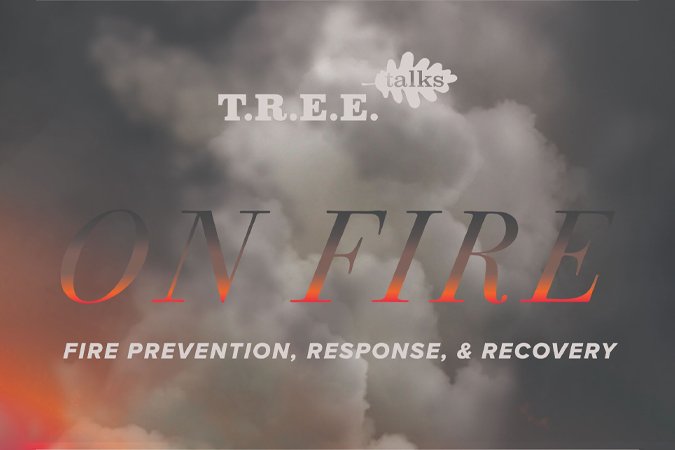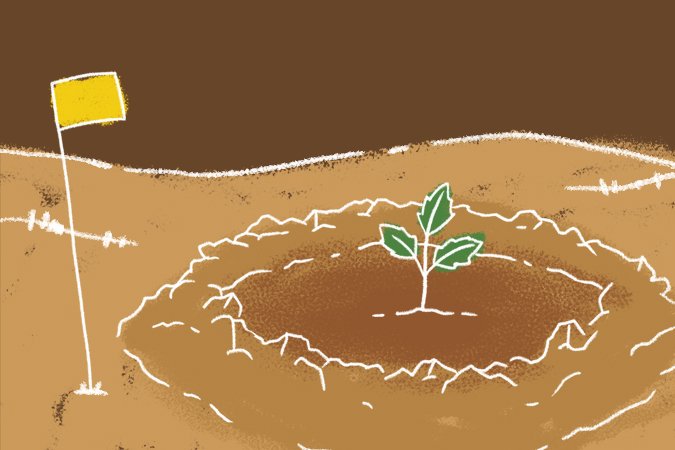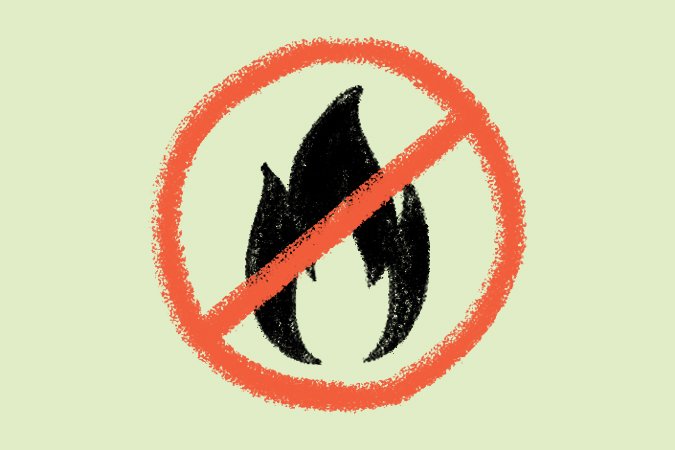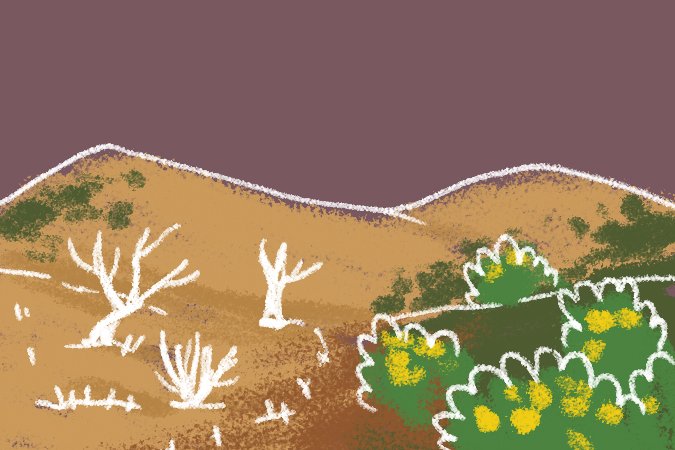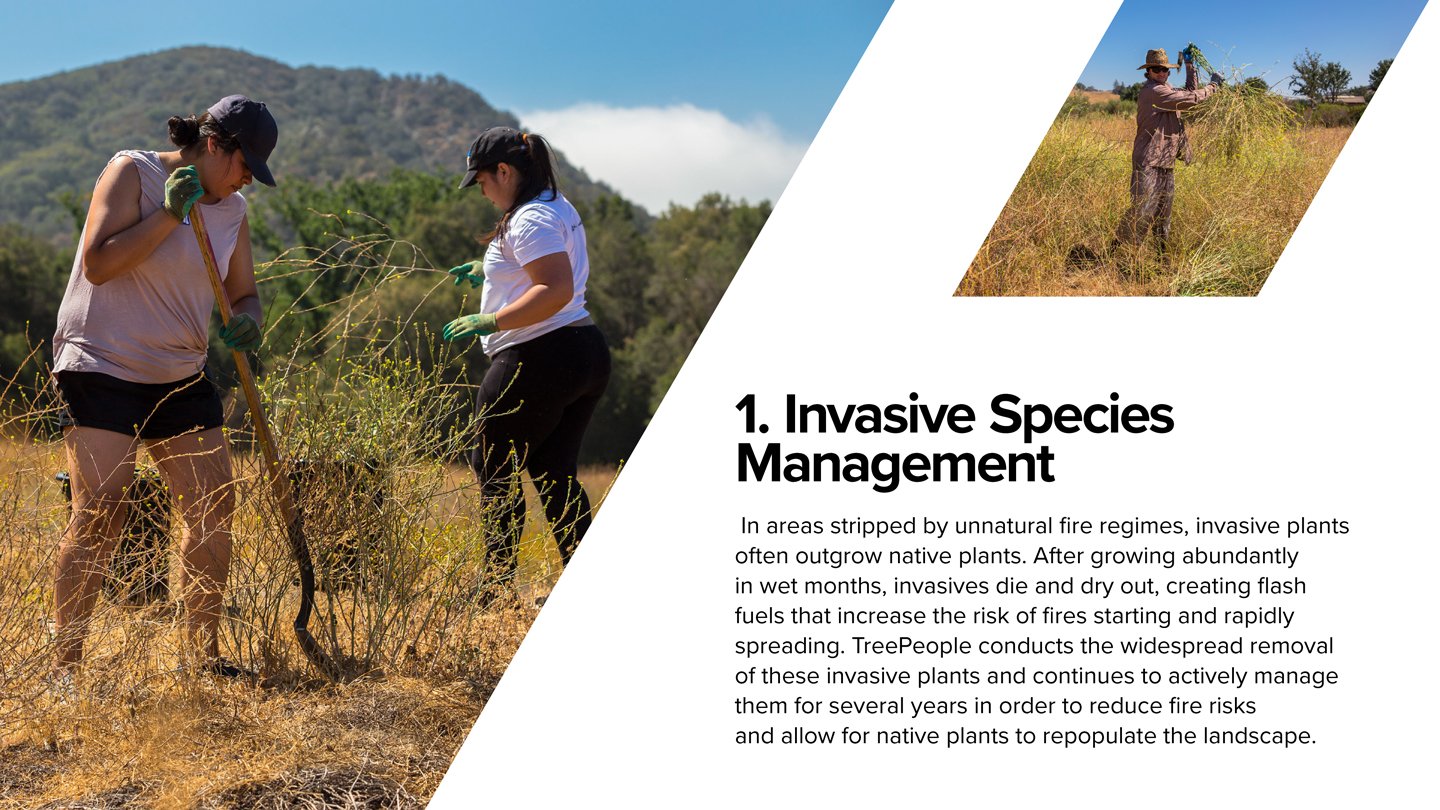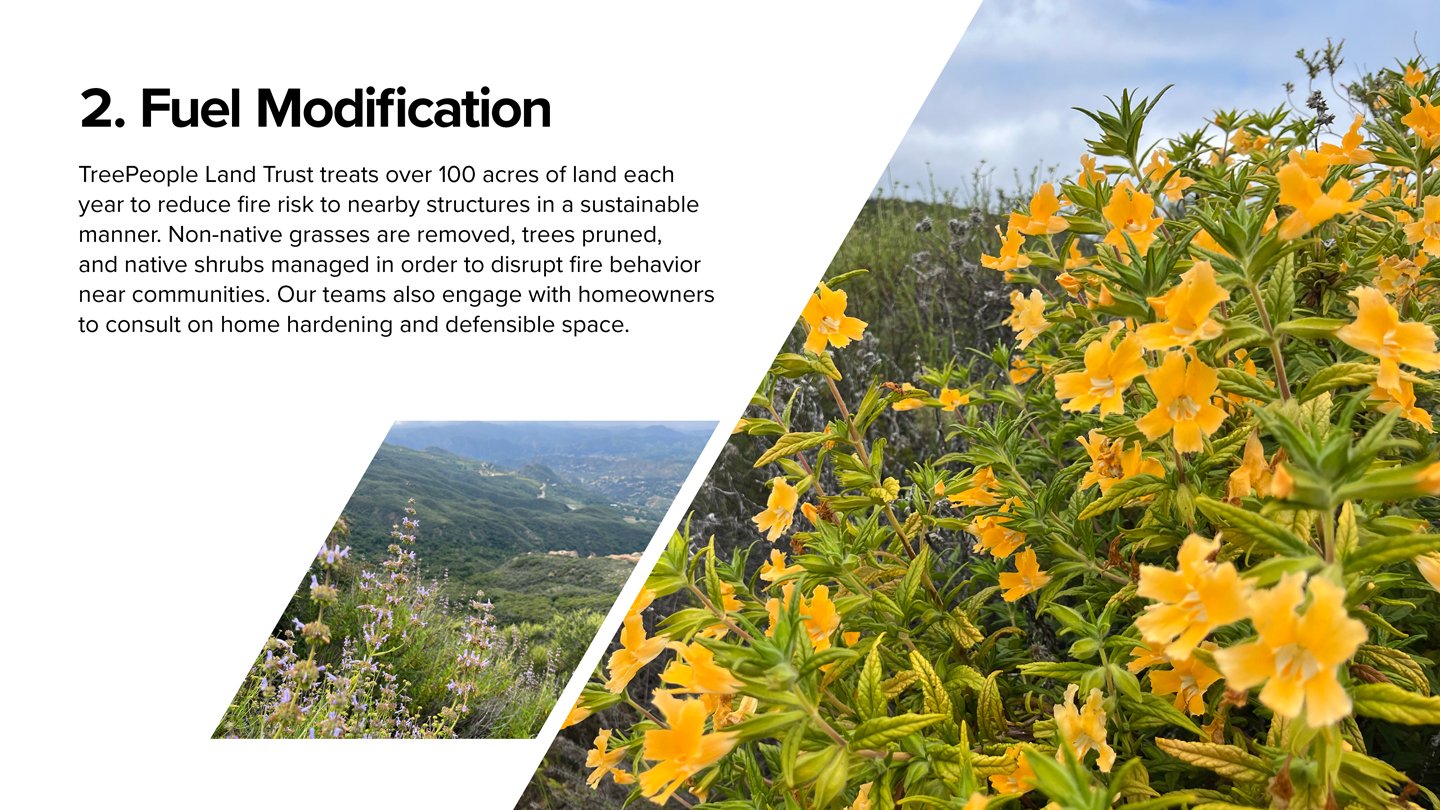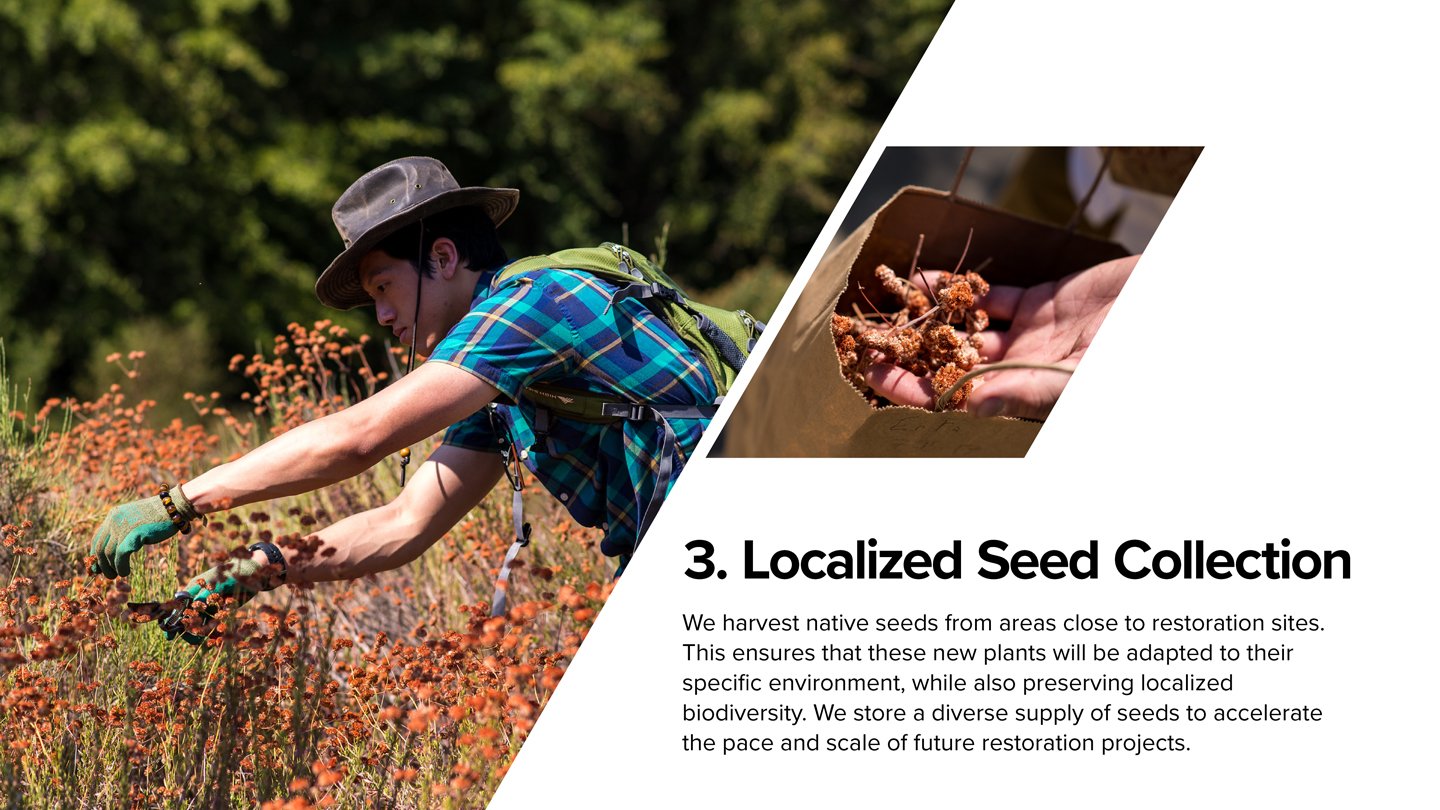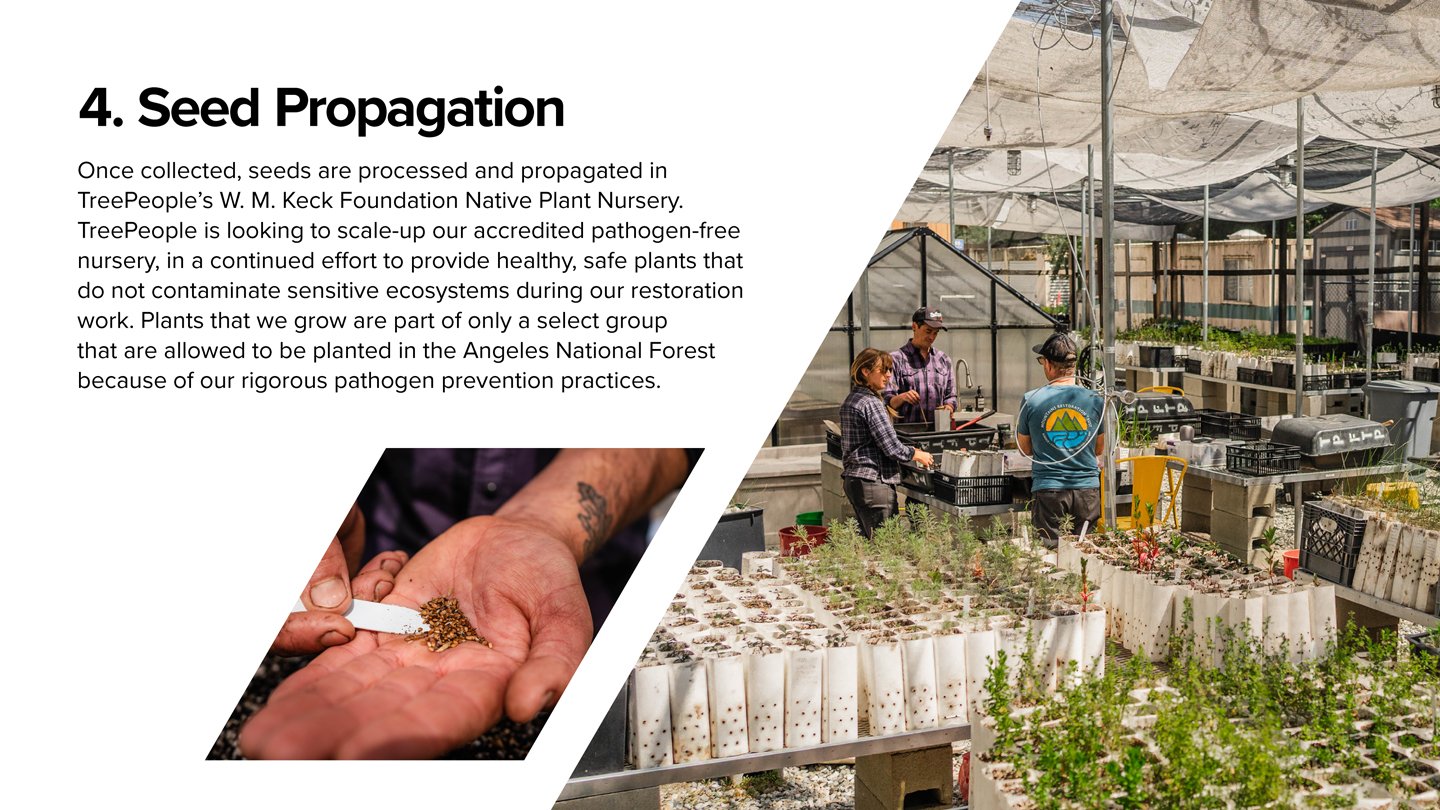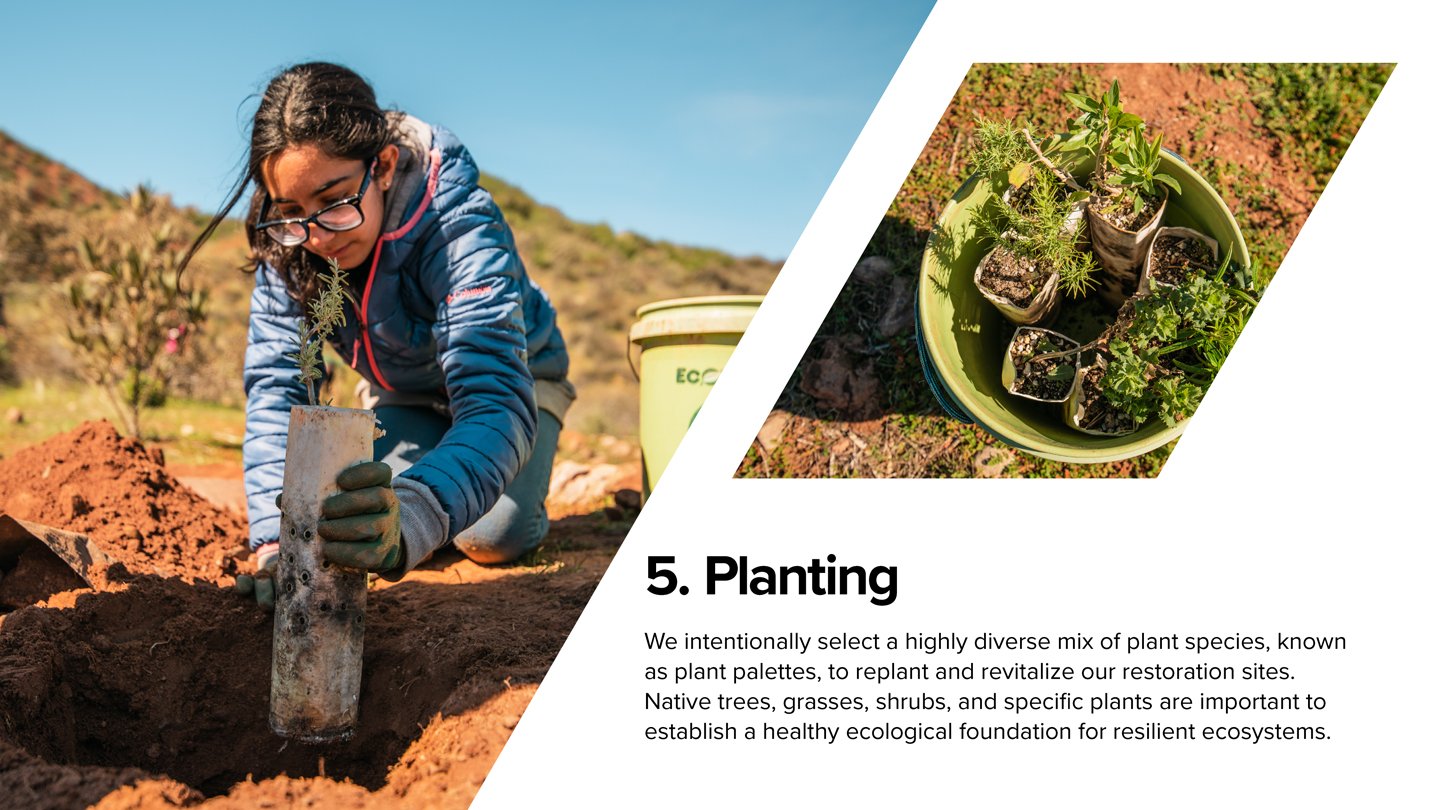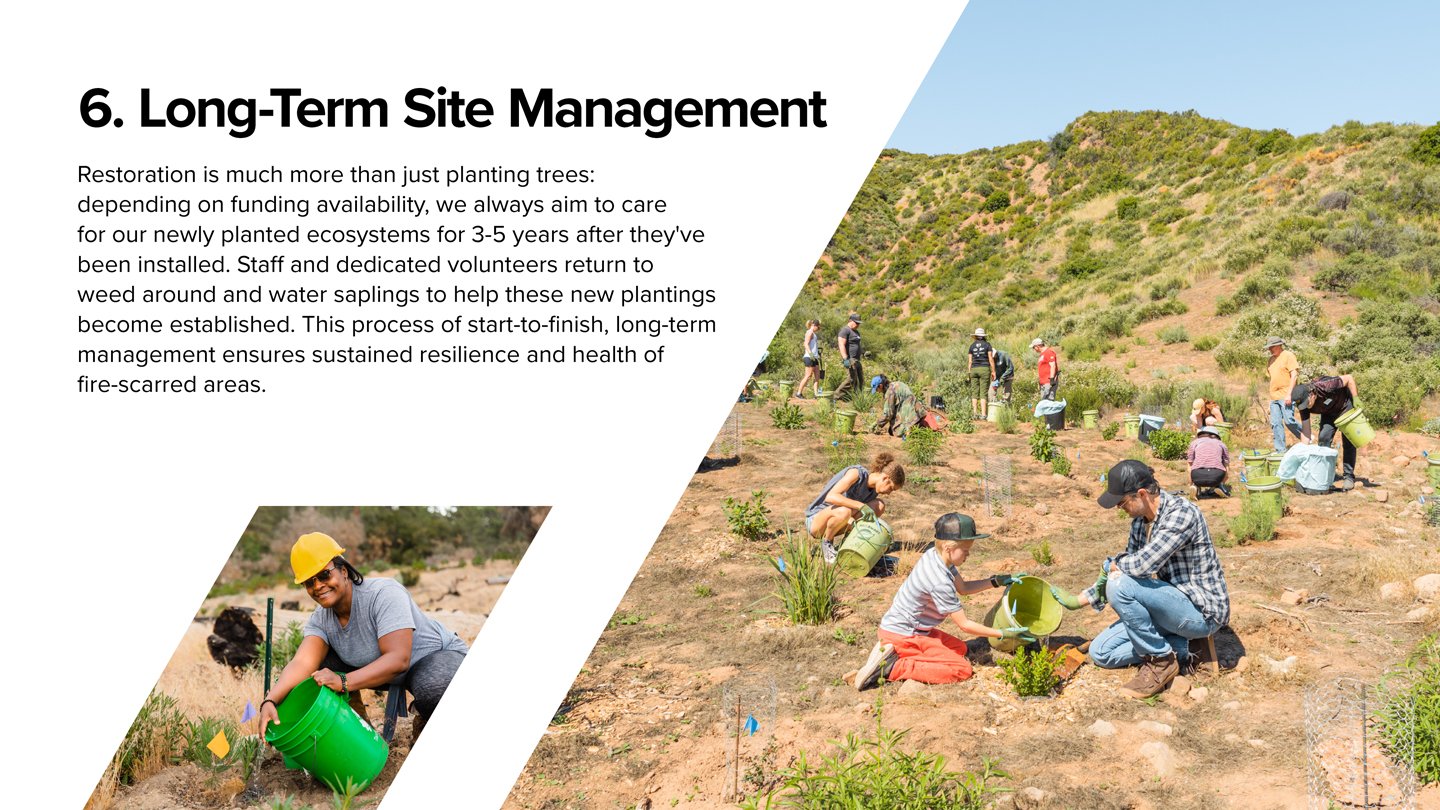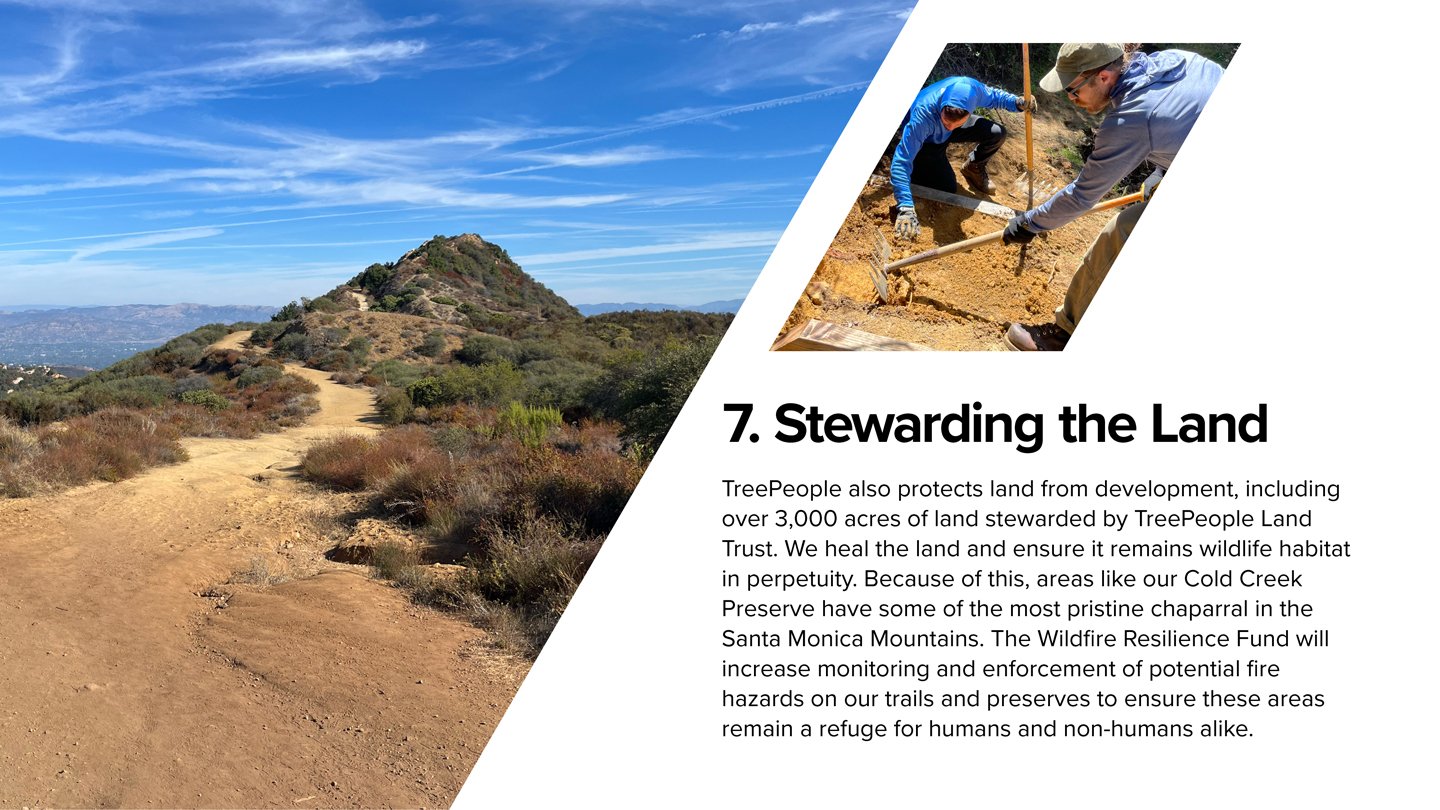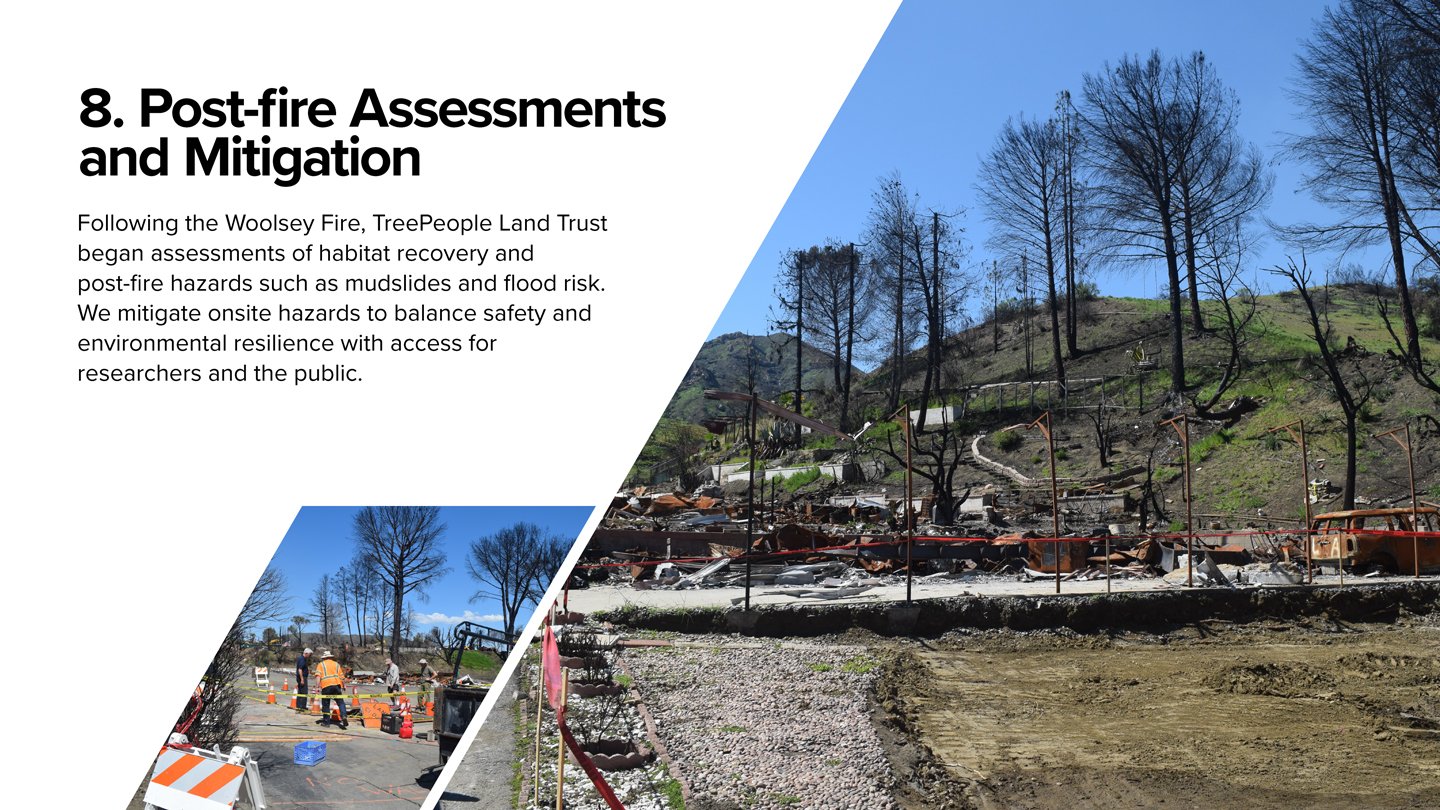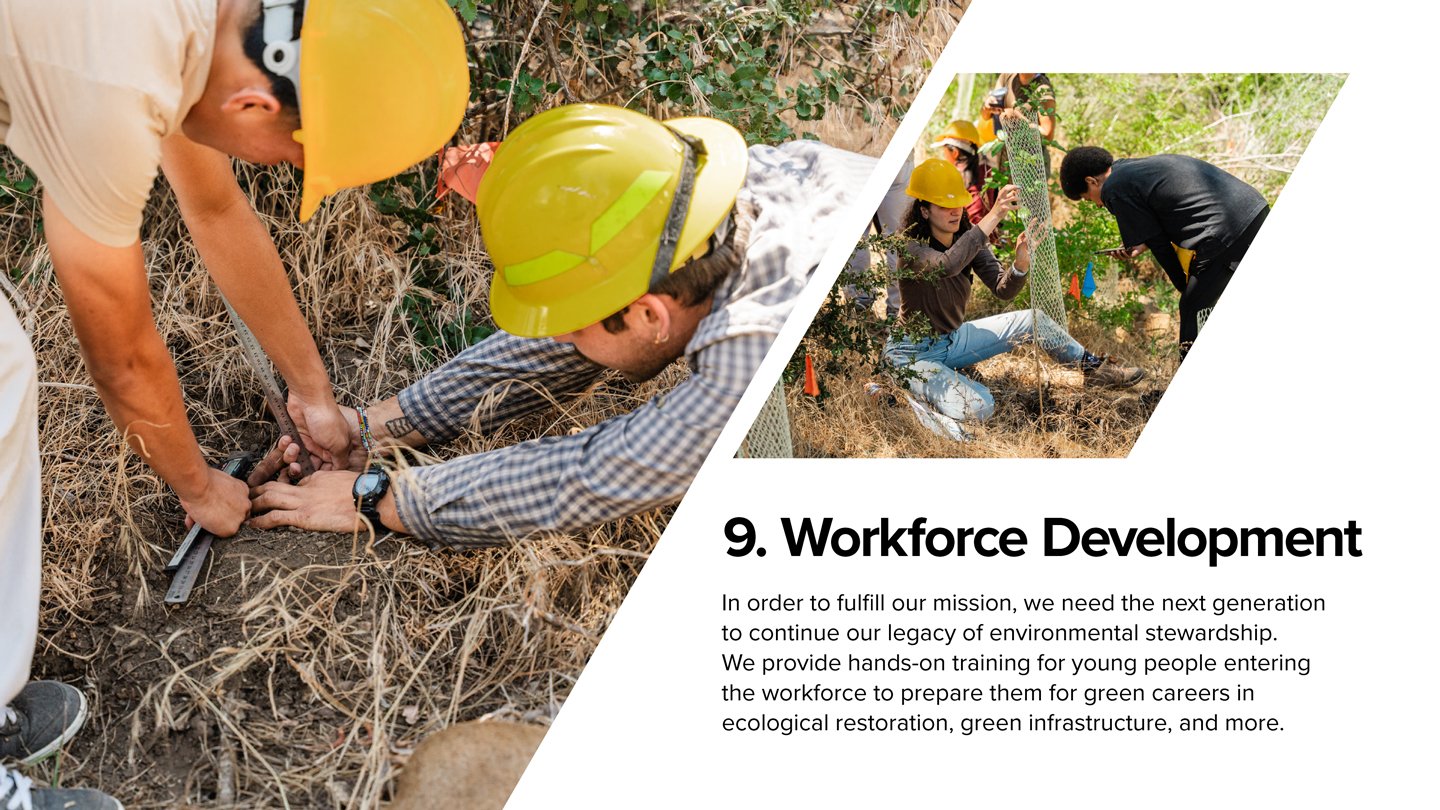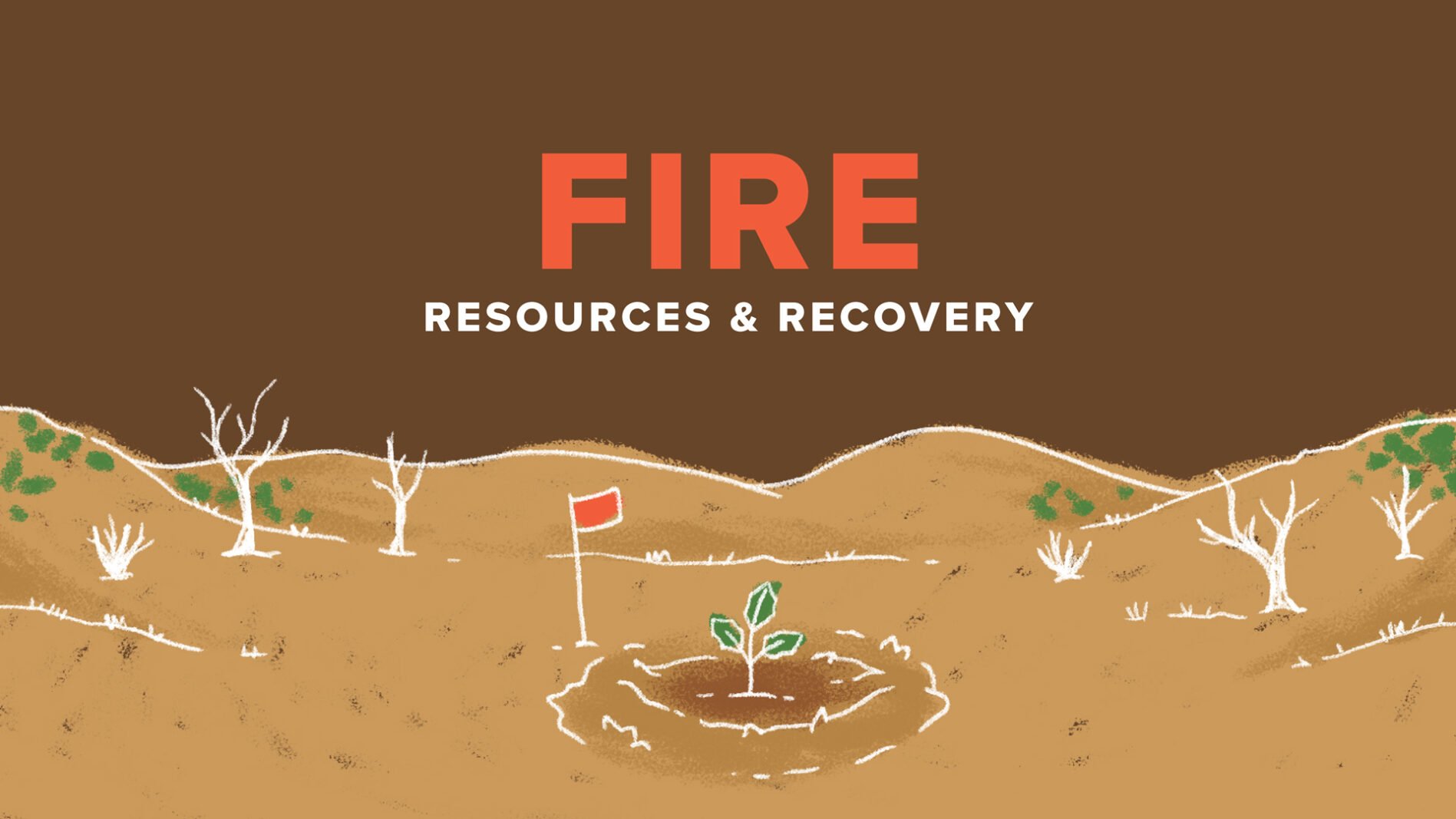

In the Wake of the Wildfires: A Message of Hope and Solidarity
When wildfires devastate our communities and ecosystems, our hearts ache for all those affected. TreePeople has always been a place of community, resilience, and healing, and we want to offer some resources and information to help you navigate.
Although fire is incredibly destructive, the land will heal. The road may be long, but together we will rise stronger. When the time comes for post-fire restoration, TreePeople has expertise in restoring fire-scarred areas.
To everyone affected: you are in our thoughts, in our actions, and in our hearts. We stand by your side, committed to healing and rebuilding, one step at a time.
Heal the land; heal the mind.
With strength and solidarity,
The TreePeople Team
Let's Give Nature Time To Heal
Burn Scars
In the immediate aftermath of a fire, people should not interfere with burn scars. Please refrain from sowing seeds in any affected areas, or even visiting them—you might disturb the delicate process of regrowth, and our clothes and shoes can unintentionally introduce the seeds of invasive species that can outcompete native plants. When trails open in the area, please stay on trail at all times.
It takes months before restoration activity in a burn scar can commence. TreePeople has multiple projects working in burn scars. Please visit our Volunteer Calendar and select any event with the word “Restoration” in it.
Post-Fire Restoration
Restoration is one of our deepest passions at TreePeople, yet this intricate process takes time. We do not start restoration projects until it is safe.
We expect restoration efforts to start happening between 8 months to 2 years after a fire event.
As soon as staff and volunteers can safely work on active projects, announcements will be made to continue our programs that work to mitigate fire across the region.
What We Do (from planning to care)
How You Can Help
Let’s Focus on People: Wildfires also impact our urban areas and the people that live in them. When a major wildfire happens, it’s essential to focus on assisting local families, SoCal residents, and other impacted communities.
Information & Resources:
- CA Gov’s LA Fires List – Assistance for people affected by the wildfires:
- CAL Fire Maps – Stay aware of the current wildfires and CAL Fire efforts.
- Los Angeles Region Community Recovery Organization – Comprehensive list of Disaster Distress Information, including hotlines and evacuation tips.
- Wildfire Taskforce’s Southern California Regional Profile – Stay informed on SoCal’s unique regional profile and wildfire resilience.
- Visit Defensiblespace.org – Explore insightful information about sustainable defensible space.
- LA Animal Services – Pet Food Pantry for low-income individuals and families.
- Airbnb/211 – Airbnb and 211 LA are offering free temporary housing for residents displaced or forced to evacuate due to the recent wildfires.
Organizations Needing Volunteer Support from the January ‘2025 Fires:
- It’s Bigger Than Us
- World Central Kitchen
- Los Angeles Reginal Food Bank
- LA Dream Center
- YMCA
- Project Angel Food
- Pasadena Community Job Center
- Union Rescue Mission
- Friends In Deed
- Habitat for Humanity of Greater Los Angeles
Find more opportunities on these lists from the Los Angeles Times and Mutual Aid LA
FAQ
Are TreePeople parks open?
Thankfully, Coldwater Canyon Park was not affected by the Studio City or Sunset fires and is now open upon approval from the City of Los Angeles. We look forward to seeing you in the park once again!
TreePeople Land Trust trails remain closed until evacuation orders are lifted. The fires did burn several land trust properties, but Cold Creek and its trail network have not been significantly impacted. Please check the banner on our website for any updates.
What is TreePeople’s history with wildfires?
TreePeople has a rich history of restoration post-wildfires. You can read about our current projects here. From the "Forest Aid" conifer reforestation effort after the 2009 Station Fire, to the restoration of oak woodlands in the 2018 Woolsey fire, and to our current work in multiple fire scars, including Copper, Powerhouse, Lake, Sayre, Sand and Bobcat fires, our staff has built an extensive knowledge and experience, developing best management practices to ensure the most successful result. You can read about one of our current post-fire restoration projects that just started this year, here.
Will TreePeople be restoring any land affected by the January 2025 fires?
For safety and to allow the land time to heal, forest restoration work in burn areas won’t commence for several months. Once it’s safe, we will mobilize our dedicated volunteers to help bring life back to these areas. For now, we continue to offer volunteer opportunities to plant and care for trees in cities throughout the region as well as to restore wildlands damaged by past fires.
How do I deal with smoke and poor air quality caused by wildfires?
We are not air quality experts, but you can protect yourself by:
- Staying indoors with windows and doors closed.
- Using air purifiers or creating a DIY air filter using a box fan and HEPA filter.
- Wearing an N95 mask if you must go outside.
- Monitoring air quality using resources like AirNow.gov.
What can I do to protect my home from wildfires?
Home hardening and defensible space can increase your home’s resilience to wildfire. It’s not a wall of flame that most often ignites a home, but wind-blown embers that can travel several miles ahead of the fire front.
- Start with the home by retrofitting the structure to reduce susceptibility to ember intrusion.
- Remove all flammable materials within 5 feet of the structure. This can include trash cans, wood piles, chairs, ornamental plants, and more.
- Clear leaves, pine needles, and debris from gutters and around your home.
- Create defensible space around the structure consisting of irrigated, well-maintained vegetation that is appropriately spaced
For a detailed guide, visit https://defensiblespace.org/
How can I prepare my family for future wildfires?
- Create an evacuation plan and practice it with your family.
- Dry, windy weather greatly increases wildfire risk. If there is a red flag warning in your area, pay extra attention and be prepared to evacuate if needed.
- Download alert apps such as Watch Duty or PulsePoint
- Pack a go-bag for each family member.
- Learn more at CAL Fire’s ReadyforWildfire.org
How do wildfires affect the environment long-term?
Wildfires can lead to soil erosion, water contamination, habitat destruction, and poor air quality. To mitigate long-term effects, post-fire restoration efforts like planting trees, rebuilding natural habitats, and soil stabilization are essential.
Please join our newsletter and follow us on Instagram, Facebook and other socials to stay up to date.
Join Our Newsletter
Stay up to date with TreePeople’s newsletter. Find out about upcoming events, announcements, jobs, and other opportunities to get involved!
By submitting, you are agreeing to receive TreePeople related news and occasional communications, and agreeing to our Privacy Policy.

